Accessible by Design: Will Sharp’s Rethink of Contemporary Jewellery
Contemporary jeweller Will Sharp is part of a new wave of contemporary makers redefining what jewellery can be - who it’s for and how it’s made. A graduate of Glasgow School of Art, where he also held an Artist in Residence position, Will was selected in 2019 for Shine, the Goldsmiths’ Centre’s annual showcase of new talent and part-time business skills training programme. His work stands at the intersection of tradition and innovation, blending CAD design, 3D printing, precious metal casting, with hand fabrication, and a strong focus on sustainability through the use of recycled silver and PLA, a plant-based bioplastic.
Will’s bold and colourful jewellery has since travelled far beyond his studio at The Art House in Wakefield, with exhibitions in China and the Netherlands. He has created bespoke collections for museum and gallery shops such as The Hepworth Wakefield, the Baltic Centre for Contemporary Art and London Museum Docklands, a retail project curated in collaboration with the Goldsmiths’ Centre. He continues to make jewellery that reflects his working-class roots - high-quality, responsibly made, and guided by a core principle: accessibility. His work actively subverts the idea of jewellery as elitist, offering well-crafted pieces for us all that are fun, sustainable, and challenge traditional ideas of who jewellery is meant to be for.
In this interview, Will reflects on his journey so far - from early experiments, his training path and industry support to the challenges of building a creative business - and why accessible design remains at the heart of everything he makes.
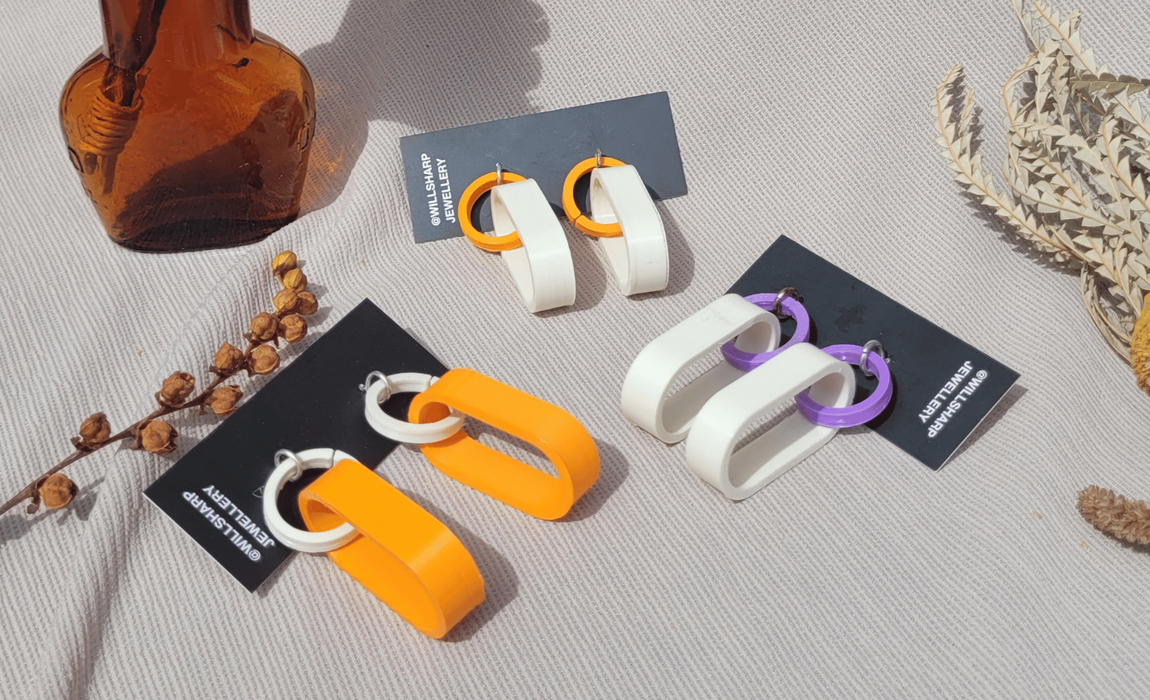
Values and Approach to Jewellery
When I started my business, I had just completed my studies at Glasgow School of Art. Coming from a working-class background, I felt driven to prove I could make it work. After graduating from my degree in 2019, I knew I wanted to make my jewellery accessible - not just for people who can afford high-end pieces, but for a wider audience.
I’ve always focused on producing affordable, sustainable, and well-made jewellery. I prioritise offering different price points while maintaining quality because I want to make jewellery more inclusive. Jewellery is expensive, especially with material costs, but I think it’s important to use more affordable materials without compromising on design. I work with PLA, a bioplastic that’s more affordable, alongside silver, and also make larger silver pieces. It’s about creating options that are accessible, changing perceptions, and showing that plastic, when used thoughtfully, can be precious too. It’s all about sourcing and using materials sustainably.
Challenges and Going Full-Time
Financial concerns and building a customer base were the biggest barriers for me in the development of my career. It’s hard to commit when so much feels unknown. Doing it part-time is very different - you have a job as a buffer. But to commit fully, you have to go all in, and that financial impact is a huge factor.
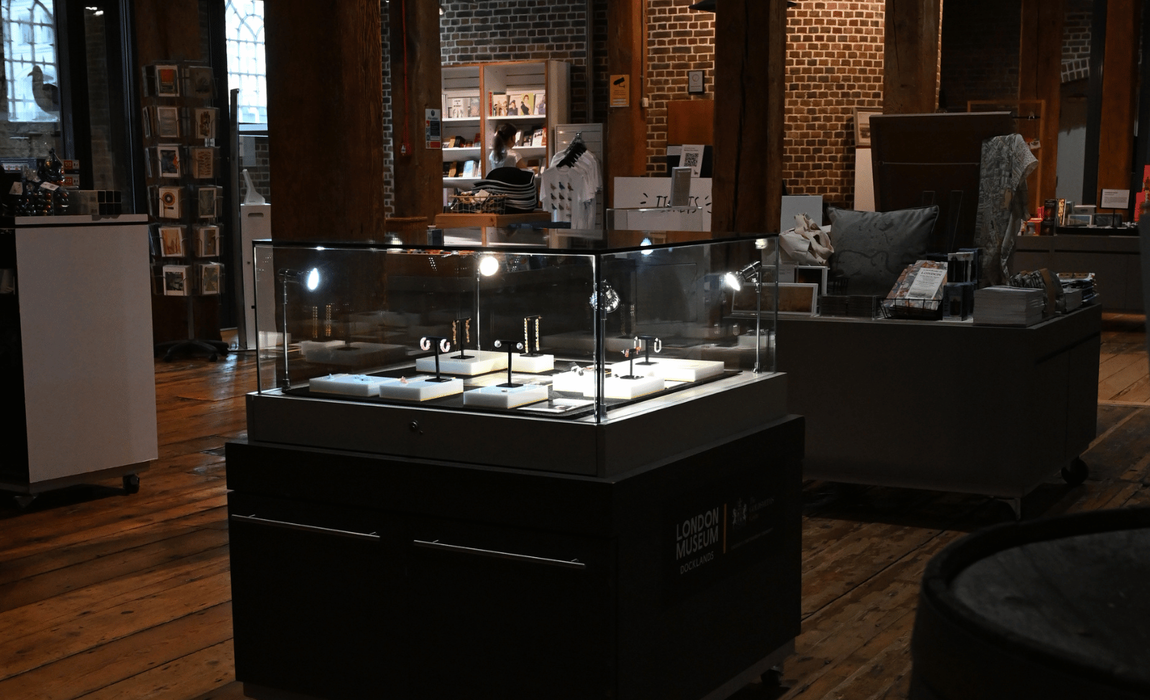
It was around the time of the London showcase at the London Museum Docklands shop that I’d built up quite a few stockists. I noticed a real difference in the audience at that museum space compared to other galleries - there was a clear increase in sales. Since then, my work has been sold in several museums and gallery shops. I feel like that’s where my work sits best and where I’m most comfortable. When you’re full-time, having a steady income from customers who understand the product and want something niche but affordable is key. Museums and galleries have given me a new platform for that, and the demographic opened doors.
The London Museum Docklands showcase was definitely the biggest highlight for me. It broadened my customer base and helped me see how far I’ve come since I started. When confirmation of the museum collaboration came through, I didn’t fully realise the significance until after I’d submitted the application. Then I thought, “This is actually something to be proud of.” Seeing it take shape was a proud moment. It came just a few months before I went full-time and helped me feel confident that I was making the right decision.
Exhibitions and Building a Customer Base
In the first few years, I focused on UK exhibitions and markets, but right after graduation, I also took part in some international shows. I exhibited at Galerie Marzee in the Netherlands and was part of the British Pavilion in Hangzhou, China. Those experiences were huge - being involved in prestigious shows early on was massive. It was exciting to try something new and unknown, and it reassured me that I was on the right track. Finding a new customer base is one of the hardest parts of this industry. But once you find it, you’ve got to keep the momentum going. It’s about having the confidence to know where you want to be.
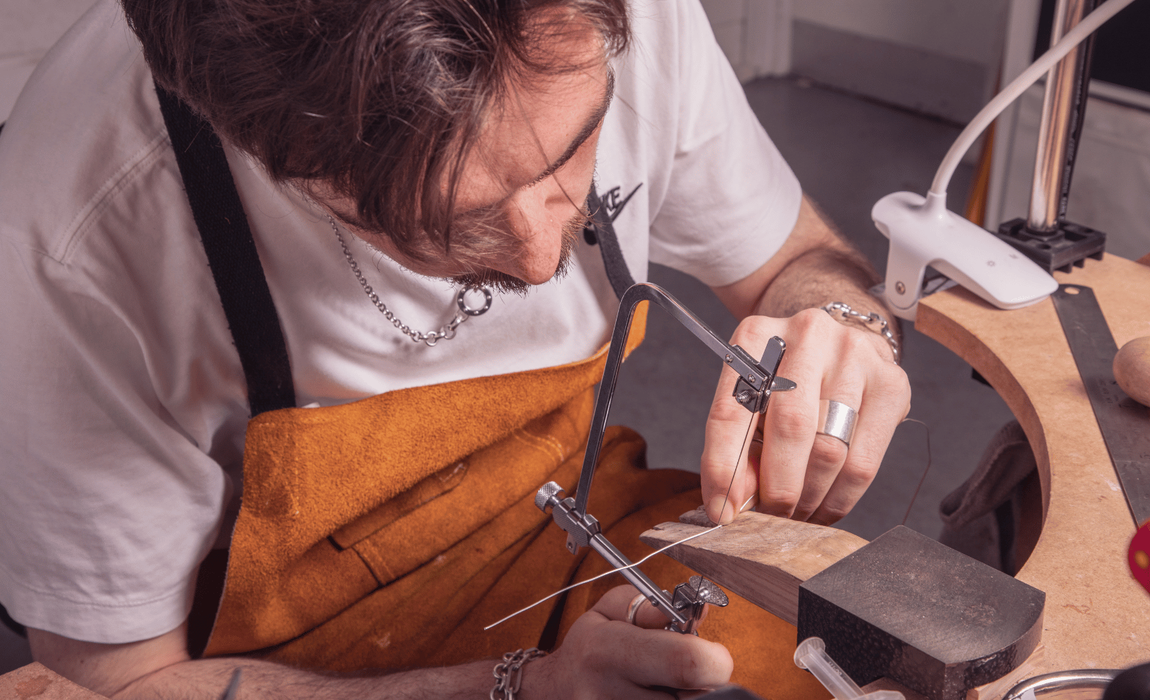
On Being Chosen for Shine 2019
After taking part in New Designers, I was chosen for Shine in 2019. It was a great opportunity for exposure - a chance to meet potential customers and new audiences face-to-face. The work I showed online and at the Goldsmiths’ Centre was based on my degree show pieces, and that experience brought a lot of learning curves. Over time, I’ve refined my work to align more with what people want - pieces that still reflect my original style but are more refined and suited to everyday wear.
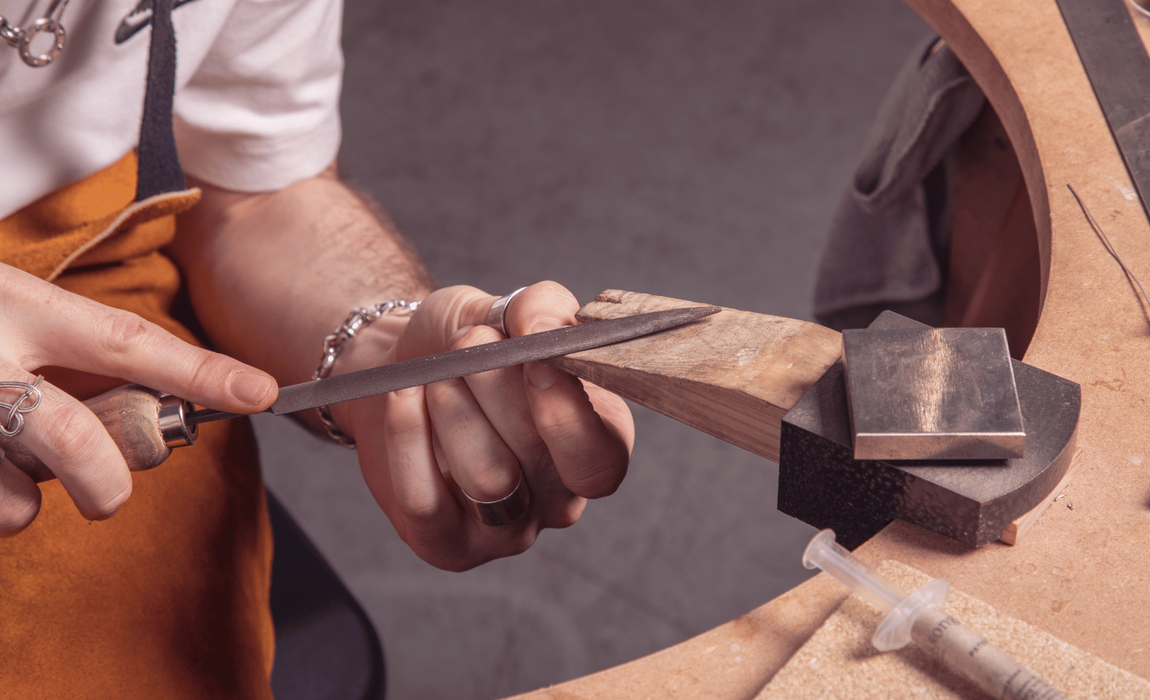
Shine taught me that not everything will be handed to you. It takes time, and you learn from the setbacks, but it’s worth it. Getting to meet people face-to-face makes the whole experience feel real. One of the best parts of Shine was meeting people beyond just those on your course - people at different stages of their careers. Some have years of experience and are only now choosing to study, while others are brand new to the field. Having those conversations was really beneficial and comforting because you realise we all go through similar things.
The Importance of Community
I’m based in a shared studio, a DIY space with woodworkers, textile makers, and others. Finding affordable studio space is hard, especially working in a niche like jewellery. This was the only affordable space I could find, and with rising rents and business costs in Leeds, it’s been great. There are about 20 makers here, all from different disciplines. Staying in touch with people I studied with in Glasgow has also been important - it’s nice to still feel connected.
London is the main hub for jewellery courses, but Glasgow and Edinburgh are also key. Sadly, Sheffield doesn’t have anything anymore. Over the years, I’ve seen courses disappear, making access harder. That’s why places like the Goldsmiths’ Centre are so important. Leeds doesn’t have a jewellery course, so for me, it’s been about starting over and building a customer base.
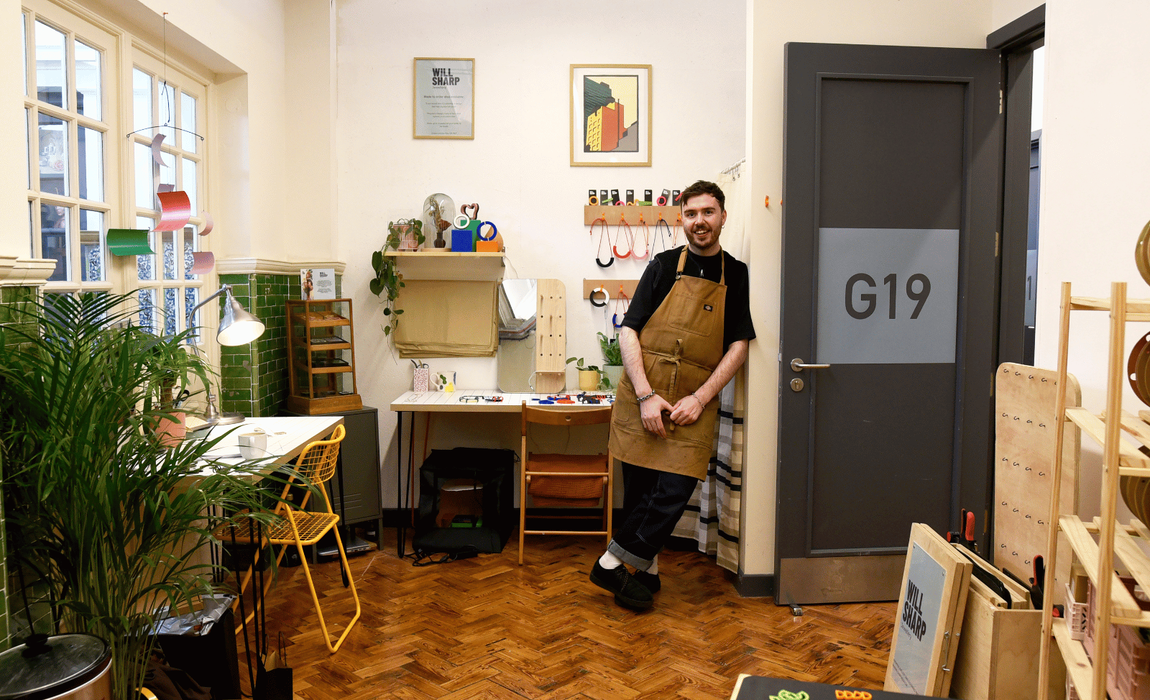
The Goldsmiths’ Centre supports both niche areas of jewellery and the more retail-focused side. It gives you a platform and helps you find your customers. Once you finish studying, you’re on your own, trying to find your feet - that’s when you can fall back on the Centre for support and use it when you need it. It helped give my work a platform and a voice, and I really value how it supports different areas of jewellery, not just precious metals. It’s a great environment for sharing ideas and taking part in projects.
About a year ago, I decided to go full-time with my business. Having someone like Charlotte Dew from the Goldsmiths’ Centre team to ask for advice was super helpful. Just knowing that understanding and support is there made a big difference. It’s a big leap, but Charlotte has seen so many people go through the same thing, so she can help calm your nerves and reassure you it’ll work out - especially if you’re passionate about what you’re doing.
“Hold your Nerve and Trust your Gut!”
If I could give advice to my younger self, I’d say: hold your nerve and trust your gut. If you’re passionate about something and you show that, people will support you. But not every piece of advice needs to be taken on board. Everyone will have their say, but you have to know what’s right for you. I’ve learned to be more confident in making decisions and to take more risks - that’s been a big part of my growth.
It’s about juggling multiple things and sticking with it. It doesn’t happen overnight. There are ups and downs - the highs can be really high, and the lows really low - but it’s worth it. Being able to make a living from what you create is the best feeling. The income might not match a salaried job, but knowing you’ve made it happen is a huge reward. If you want to do something, you’ll find a way. It’s about holding your nerve, talking to people who’ve been through it, and learning from their experiences - that’s part of the journey.